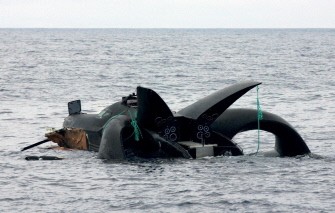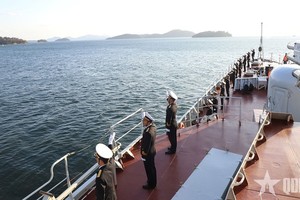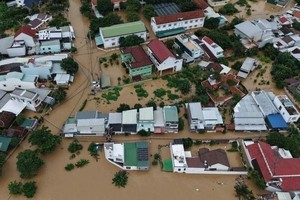SYDNEY, Jan 8, 2010 (AFP) - A high-tech protest boat sank without trace on Friday after a dangerous collision with a Japanese whaling ship, as Australia protested to Tokyo over its fleet's alleged tactics.
Peter Hammarstedt, first officer of the Sea Shepherd group's "Bob Barker" ship, said the celebrated "Ady Gil" was abandoned overnight after a tow line snapped en route to an Antarctic research base.

The futuristic trimaran, which held the round-the-world record, had several metres (yards) of its front end sheared off in the collision with a Japanese security vessel on Wednesday.
"At this point unfortunately the Ady Gil is on the bottom of the Southern Ocean," Hammarstedt told AFP.
"It leaves us with no other option but to re-take up the pursuit of the whaling fleet," he added. "We have no intention of backing down. We will never surrender."
Deputy Prime Minister Julia Gillard said Australia's Tokyo embassy had relayed "very strong concerns" over recent developments, including Wednesday's crash and claims the fleet chartered spying flights out of Australia.
"Our embassy in Tokyo is making high-level representations to the Japanese government," she said.
"They have passed to the Japanese government our very strong concerns about the question of flights being chartered, potentially in Australia, to monitor the activity of protest vessels.
"They have passed on our very strong concerns about conduct on the high seas and of course we continue to make it very clear, our view about whaling."
Footage of the crash showed the "Shonan Maru 2" ploughing across the New Zealand-registered Ady Gil's bow and firing water cannon while the protest boat's crew dived for safety.
Hammarstedt said the stricken powerboat, bankrolled by Hollywood businessman Ady Gil, broke its tow line after taking on too much water.
"Last time we saw the Ady Gil, the entire engine room was fully submerged in water as well as the fuel tanks," he said.
"It was going down pretty quickly. Captain Pete Bethune estimated two to three hours before being fully submerged. At that point we decided to take up the hunt for the whaling fleet again."
New Zealand and Australian authorities are investigating the incident, while Japan lodged a strong protest with the Wellington government. Both the whalers and the protesters blame each other for the crash.
"In the last few seconds we realised, shit, they're actually going to collide with us," recalled New Zealand protester Simeon Houtman, who was left with broken ribs.
"Instinct took over and we all just dived for the aft desk and landed in a heap. Thankfully everyone survived."
Sea Shepherd claims to have saved hundreds of whales by chasing the Japanese fleet over a six-year campaign backed by Hollywood A-listers including Sean Penn, Martin Sheen and Pierce Brosnan.
Japan hunts the animals using a loophole in a 1986 international moratorium which allows "lethal research", defying regular protests from Australia, New Zealand and the Netherlands.
The skirmishes have grown increasingly sophisticated with the activists deploying laser-like devices and stink bombs, and the Japanese fleet operating military-style acoustic weapons and water cannon.
Sea Shepherd also claims the Japanese chartered flights to pinpoint their position so that the Shonan Maru 2 could keep them away from the whalers, setting off a pursuit which set back the harassment campaign by weeks.
The Ady Gil, which put to sea in December, made its first contact with the fleet before dawn on Wednesday before being stricken in the dramatic crash just hours later.
The sleek, carbon-and-kevlar, wave-piercing trimaran was capable of speeds up to 50 knots, and claimed the circumnavigation record in 2008 under its former name, "Earthrace".
























